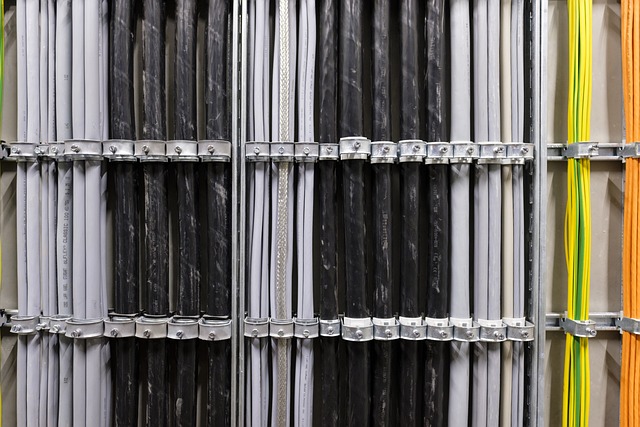Residential structural repairs, particularly addressing foundation cracks, settlement, and bowing walls, are crucial for home safety and integrity. Pier installation, an effective solution, involves deep foundation supports that transfer load to more stable soil layers, preventing further damage. Homeowners should promptly address these issues to avoid costly repairs and potential hazards. Pier installation is a vital technique used by contractors to reinforce homes on unstable soil, offering long-lasting stability for various structural repairs. Regular inspections and selecting qualified contractors specializing in pier installation are key to securing your home's integrity. This proactive approach can save costs and extend your property's lifespan.
Residential structural repairs are essential for maintaining home safety and value. This comprehensive guide explores common issues like foundation cracks, settlement, and bowing walls, highlighting their impact on your property. We delve into innovative solutions such as pier installation, a proven method to strengthen homes and prevent further damage. Learn how to identify signs of structural trouble and choose the right contractor for your needs. Discover various repair techniques, cost estimates, and maintenance tips to ensure your home’s longevity.
Understanding Residential Structural Repairs: Common Issues and Their Impact

Residential structural repairs are essential for maintaining the integrity and safety of homes. Common issues include foundation cracks, settlement sinkage, and bowing walls, often caused by poor soil conditions, shifting tectonic plates, or aging structures. These problems can lead to significant structural damage if left unaddressed, compromising the stability and value of a home.
One effective solution for many structural issues is pier installation. This process involves deep foundation supports that transfer the load from the building to more stable layers of soil below. By reinforcing the foundation, pier installation helps prevent further damage and ensures the long-term stability of the structure. It’s crucial for homeowners to address these concerns promptly to avoid costly repairs and potential safety hazards.
The Role of Pier Installation in Strengthening Homes

Pier installation is a crucial technique employed by residential structural repair contractors to reinforce and strengthen homes, particularly those built on weak or unstable soil. This method involves the strategic placement of vertical supports, known as piers, beneath the foundation of a structure. These piers act as additional anchor points, distributing the weight of the home more evenly across the underlying earth. By doing so, they significantly enhance the overall stability and structural integrity of the building.
The process of pier installation requires skilled professionals who assess the specific needs of each property. They determine the type and depth of piers best suited to the soil conditions and the structure’s load. Once installed, these piers can support a wide range of repairs, from foundation settling issues to whole-house leveling. This makes pier installation an effective and long-lasting solution for homeowners looking to stabilize their properties and prevent future structural damage.
Identifying Signs Your Home Needs Structural Repair

If your home is starting to show signs of structural issues, it’s crucial to address them promptly. One of the first indicators that your house may need repair is uneven floors or walls. If you notice cracks in your foundation, ceiling, or walls, or if doors and windows have begun to stick or are no longer aligning properly, these could be red flags. Another common sign is slanted or bowed walls, which might suggest a problem with the structural supports beneath.
In some cases, issues like sticky or misaligned floors, sagging ceilings, or uneven staircases can be early warnings of problems with pier installation or other fundamental support systems. If you own an older home, these issues become even more critical as time goes on, making regular inspections essential to catch potential problems early.
Choosing the Right Residential Structural Repair Contractor

Choosing the right residential structural repair contractor is a crucial step in ensuring your home’s stability and safety, especially after dealing with issues like foundation problems or damage from natural disasters. Look for professionals specializing in specific areas of concern, such as pier installation, which can be vital for stabilizing homes with sinking foundations.
When selecting a contractor, consider their experience, licensing, insurance, and references. Check if they have the necessary equipment and expertise to handle your specific repair needs. A reputable contractor will provide detailed estimates, offer guidance on the best course of action, and maintain clear communication throughout the project.
Types of Structural Repair Techniques and Technologies

In the realm of residential structural repair, various techniques and technologies are employed to ensure the safety and longevity of homes. One of the most common methods is pier installation, which involves the strategic placement of supports beneath a structure to stabilize and align it. This technique is particularly useful for foundations that have settled or shifted over time, offering a lasting solution to structural issues without extensive demolition.
Beyond pier installation, modern contractors leverage advanced technologies such as helical piles, which are highly versatile and effective in both new construction and repair projects. These piles can be installed in various soil conditions, making them a game-changer for challenging renovation sites. Additionally, the use of laser technology for precise measurements ensures accurate repairs, while 3D modeling allows contractors to plan and visualize complex structural modifications before they begin, streamlining the entire process.
Cost Considerations for Residential Structural Repair Projects

When embarking on residential structural repair projects, cost considerations are paramount. The expense of repairs can vary greatly depending on several factors, including the extent of damage, the type of structure, and the chosen method of repair. For instance, a common and effective technique known as pier installation can significantly impact the budget. Pier Installation involves underpinning a structure by inserting steel piers into the ground to support weak or settling foundations. This method is cost-effective for repairing concrete slabs, basement walls, and foundation cracks, offering a durable solution without extensive excavation.
However, it’s crucial to balance the benefits of specific repair methods with their associated costs. Other options may include foundation repairs, beam replacement, or even structural reinforcement, each carrying its own price tag. Homeowners should obtain detailed quotes from reputable contractors to ensure they understand all cost implications and choose the best course of action for their budget and property’s long-term health.
Maintaining and Preventing Future Structural Damage

Maintaining your home’s structural integrity is paramount to preventing future damage. Regular inspections are key; these allow for early detection of any issues, such as foundation cracks or leaning walls. A proactive approach can often prevent what could become costly repairs down the line. Contractors specializing in residential structural repair offer a range of solutions tailored to specific problems.
One effective method for reinforcing and stabilizing structures is pier installation. This process involves strategically placing supports beneath the foundation to distribute weight evenly and address settling or shifting. By investing in such preventative measures, homeowners can extend the lifespan of their properties and avoid more extensive (and expensive) repairs in the future.
